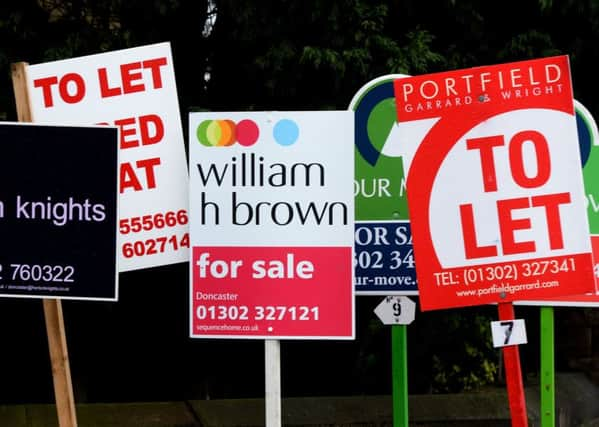North-south housing divide is wider than ever - and Brexit has frightened off buyers


Nationwide Building Society said the gap between property values in the South and North of England has increased by £24,000 in the last year alone.
The average house price across Yorkshire and the North of England is £155,222.
Advertisement
Hide AdAdvertisement
Hide AdIn the South of England, the average price of a home is £324,078.
In London, average house prices lifted to a new record high of £472,384, although the annual rate of increase in the capital has slowed down slightly to 9.9%, compared with 11.5% earlier in 2016.
The report said property prices in the capital have been supported by extremely robust labour market conditions as well as strong investor demand in recent years. The price of a typical London property is now around 12 times average earnings in the capital.
Across the UK, the average house price in June was £204,968 in June, after lifting by 0.2% month-on-month and by 5.1% annually.
Advertisement
Hide AdAdvertisement
Hide AdScotland recorded a small annual increase in house prices, with a 0.5% uplift taking average values there to £141,245.
Property values in Wales increased by 0.9% annually to reach £145,973, while values in Northern Ireland increased by 1.6% annually, taking the average property price to £128,562.
Robert Gardner, chief economist at Nationwide, said in the light of economic uncertainty stemming from the EU referendum result and a recent stamp duty hike for buy-to-let investors, it will be hard to gauge what will happen to house prices in the months ahead.
He said: “Ultimately conditions in the housing market will be determined by conditions in the wider economy, especially the labour market.
Advertisement
Hide AdAdvertisement
Hide Ad“It is too early to assess the impact of the referendum vote on the economy. However, it is encouraging that the labour market had remained robust in recent months, with solid employment growth and the unemployment rate declining to an 11-year low in April. Borrowing costs also remained close to historic lows.
“Moreover, the lack of homes on the market - with estate agents continuing to report a record low number of properties on their books - will also provide underlying support for prices even if demand softens.”
Jeremy Leaf, a former chairman of the Royal Institution of Chartered Surveyors (RICS) and a north London estate agent, said the figures are “surprisingly strong”, given that they were for a period of uncertainty when people were awaiting the outcome of the referendum.
He said: “They show that the market is more resilient than we might have expected.”
Advertisement
Hide AdAdvertisement
Hide AdMr Leaf continued: “On the ground we are seeing a determination on the part of most customers to get back to as close to normality as possible but a fall-off in transactions seems inevitable as buyers and sellers pause awaiting definite signs of change in the market.”
Sarah Beeny, owner of estate agent Tepilo, said: “It’s encouraging to see a slight uplift in annual house price growth for June despite the uncertainty caused by the EU referendum.
“Now that we know the result it does look as if things could be bumpy in the short term as we enter a period of change. However, as time passes and things become clearer, I think that stability will return and the outlook for the property market will remain positive, certainly in the medium and long term.”
Meanwhile, house-hunter numbers dwindled to a three-year low in May amid the uncertainty over the EU referendum, estate agents have reported.
Advertisement
Hide AdAdvertisement
Hide AdThe National Association of Estate Agents (NAEA) recorded an average of 304 house-hunters registered per member branch in May.
This was the lowest figure since November 2013, when 292 buyers were registered per branch. Demand from potential buyers was down by more than a fifth (21%) compared with May last year, the report said.